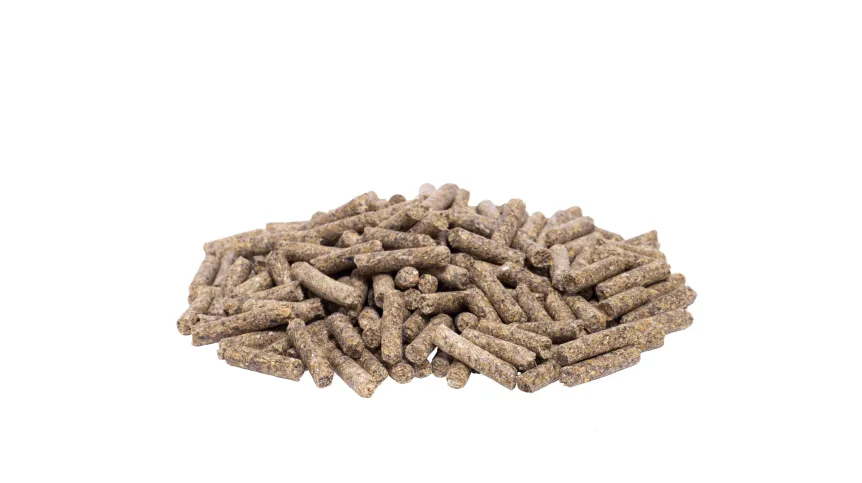
The food industry generates vast amounts of waste and by-products, most of them unused. Some may be useful because of their nutritional value and health-promoting properties. One example is oilcake, a by-product of oilseed oil pressing. It can be a raw material for various food industries.
Due to the content of valuable biopolymers and bioactive components, one of the uses of oilcake (or pomace) proposed by scientists from the Institute of Animal Reproduction and Food Research at the Polish Academy of Sciences in Olsztyn and the West Pomeranian University of Technology could be enriching baked goods for particular dietary purposes.
Writing in the journal Molecules (https://doi.org/10.3390/molecules27092690) the researchers said: “Gluten-free breads (GFBs) are products that have disadvantages such as unsatisfactory texture, low nutritional value, and short shelf life, so natural additives containing proteins and hydrocolloids are in demand to increase GFBs value. This study showed an encouraging way of using a by-product that, due to its high content of proteins, polysaccharides, minerals, and antioxidants, can add value to GFBs.”
First author of the study Dr. Urszula Krupa-Kozak told PAP: “People who are on a gluten-free diet for medically justified reasons (celiac disease, non-celiac gluten intolerance, wheat allergy, or gluten allergy) can only consume gluten-free products. This is because the elimination diet is the only effective therapeutic method in this case.
“Consumers on a gluten-free diet have the right to expect that the quality of commercially available gluten-free products, rolls, pastries, etc., will be similar to conventional products. However, this is difficult to achieve and poses a significant challenge for food technologists and manufacturers.”
She added: “It is a bit easier for young children diagnosed with the gluten-dependent disease, who have to start therapy and switch to a gluten-free diet, because they have not yet become so accustomed to the taste of traditional (wheat, wheat-rye) bread and are not so used to it. The situation of adult patients with have established eating habits and preferences is more difficult. They are often very disappointed with the taste, texture, and even appearance of these products.”
Consequently, Dr. Krupa-Kozak and colleagues are trying to develop gluten-free products with improved quality. She said: “It is often significantly lower compared to counterparts that contain gluten. The elimination of this visco-elastic protein, which is important in bread technology, results in the need to look for substitutes. Therefore, ingredients that mimic the properties of gluten are often used, allowing to give the right dough texture and consistency to baked goods: hydrocolloids, gums, emulsifiers.”
The latest study concerned using flaxseed oil cake extract to enrich the gluten-free bread composition. The scientists replaced water (from 25 to 100 percent of its original content) with flaxseed cake extract.
Krupa-Kozak said: “For years I have been involved in research on improving the quality of gluten-free baking products. Commercially available products are often low in dietary fibre, while being excessively sweet and fatty. This translates negatively into the quality of the diet and the health of this group of consumers. When developing new recipes, I use both naturally gluten-free raw materials and supplements, i.e., prebiotics, minerals, proteins of plant and animal origin.”
She continued: “This year, I have began cooperation with Dr. Łukasz Łopusiewicz from the West Pomeranian University of Technology in Szczecin, who studies oilseed pomace. We managed to find a common denominator for our rather distant scientific interests, which resulted in an idea for an innovative gluten-free bread with linseed cake extract. Dr. Łopusiewicz shared his knowledge and experience concerning his team's method to extract water extract from flaxseed cake.
“This extraction results in a product resembling flax +milk+. We used this extract, rich in valuable substances, to develop a new formula for gluten-free bread. The research included recipe development, pilot baking, and final product characterization, from nutritional evaluation andf analysis of various technological and functional parameters to sensory quality testing.”
Dr. Łopusiewicz added: “Along with flaxseed cake, we introduce numerous proteins and polysaccharides into the bread recipe, responsible, among other things, for the formation of the characteristic mucilage that we associate with cooking flaxseed. In this case, they give the bread the desired cohesiveness, porosity, structure, improving its technological properties.”
He explained that the same compounds are also responsible for improving the bread's colour (crust and flesh) and aroma. ‘He said: “The previously mentioned proteins and polysaccharides react with each other during baking. This results in the formation of compounds responsible for the perception of aroma'. Meanwhile, both aspects are often as important to consumers as other properties of bread.”
The researchers had two goals: first, to study the effect of replacing part of the water with flaxseed +milk+ on the technological parameters of the bread, and second, to increase the content of nutritional and bioactive compounds in the final product, which would have a potential nutraceutical effect on the human body.
The researchers said: “Proportionally to the amount of water we replaced with the flaxseed extract, the content of protein and minerals, especially potassium and magnesium, increased. The use of flax +milk+ had a particularly positive effect on the sensory quality of the bread, which we believe could enrich the daily diet of gluten-free bread consumers with both valuable nutrients and ingredients with health-promoting potential.”
Detailed analyses of the bread's composition showed an increased nutritional profile (it contained more protein and much higher concentrations of essential minerals) and antioxidant properties.
Dr. Krupa-Kozak added that extending the freshness period of the bread would be a highly favourable result. She said: “The disadvantage of gluten-free bread is its crispness. It quickly loses moisture, and its crumb disintegrates. Manufacturers are making efforts to improve its quality and slow the process by using packaging materials with a modified composition of the internal atmosphere to maintain the taste of the product.
“We are currently investigating whether the addition of flax +milk+ could affect extending the freshness of our bread. In addition, it will be interesting to test the microbiological stability of this product, that is, how quickly it goes mouldy compared to bread without the added extract.”
Although the research is currently in its pilot stage, Krupa-Koazk said: “Already at this stage, we are delighted with the results we have obtained. So much so that we will continue our research perhaps using other oilcakes extracted from more +exotic+ oil plants.”
“After all, depending on the plant species, oilcake can contain very different macronutrients, antioxidants, and bioactive substances,” Dr. Łopusiewicz added.
The researcher said that at this point oilseed plant extraction waste is practically not used in any way. The exceptions are rare cases of adding it to animal feed or using it as fuel.
He added: “Its potential is enormous. My team and I have been running a project for a few years, in which we are trying to use the extract (milk) to make fermented vegan foods, such as yoghurt and kefir or camembert-type cheese.”
Krupa-Kozak said: “Our study presents a promising way of using the by-product, which, due to its high content of proteins, polysaccharides, minerals, and antioxidants, can significantly increase the value of gluten-free baked goods.”
PAP - Science in Poland, Katarzyna Czechowicz
kap/ ekr/
tr. RL













